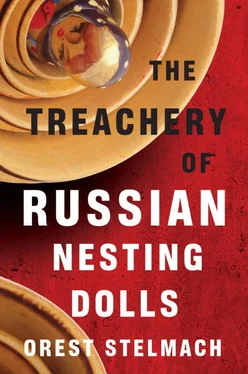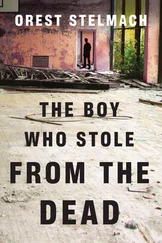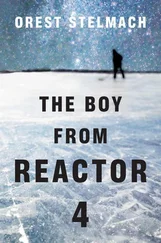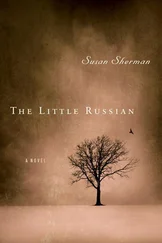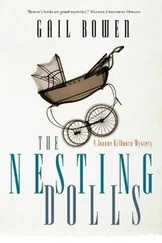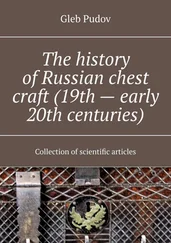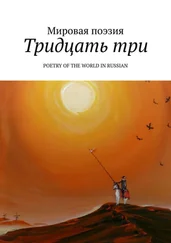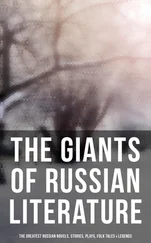Her final comment struck a chord, but I chose to ignore it and stay on point. “So none of Iskra’s Russian friends knew she was a lesbian or a prostitute, until… “
“Until Sasha followed her to De Wallen one night.”
“When was this?”
“About a week before she was killed.”
“What happened?”
“She came home that night after work and found him waiting for her in her apartment drunk. She said he scared the hell out of her, which was why she told me the story in the first place. He insulted her, called her a dyke and a whore, told her he’d hate her for the rest of her life. Which, of course, was a lie.”
“Sasha was in love with Iskra.”
“Sounded like it to me,” Sarah Dumont said.
“Then what happened?”
“She said she called him the next day and the day after that but he never called back.”
I pushed my chair back. I had to return to Amsterdam as soon as possible.
“He’s too obvious, right?” Sarah said.
“Excuse me?”
“This Sasha. He can’t possibly have killed Iskra. He’s too obvious.”
“In my experience,” I said, “the solutions to most problems are fairly obvious. The challenge is to understand the problem in the first place.”
“And what was Iskra’s problem?” Sarah Dumont answered her own question. “She had to lead a double life, right? On the one had she was her parents’ daughter, but on the other hand she had to be herself.”
“No,” I said. “That would have been bad enough. She chose to lead a triple life. She was someone’s daughter, her own woman, and the girl in the window in De Wallen .”
“Which one got her killed?”
I stood up to leave. “That’s what I have to figure out.”
CHAPTER 12

Four hours later I was back in Holland and returning to an historic residential neighborhood which also contained an infamous red-light district. From Amsterdam to Bruges and back, from one murky set of waterways to another, I seemed to be following the canals wherever my investigation led me. Now I was right back where it all started, in De Wallen , the place where forbidden dreams came true.
I’d called George Romanov from the train to Brussels and asked him to arrange a meeting with Sasha. “Sasha is Sasha,” Romanov had said, when I’d queried him about the boy’s relationship with Iskra in her apartment. In fact, Sasha’s full name was Sasha Norin, and like so many of his generation, he called himself an entrepreneur.
Romanov told me that Sasha was a graphic artist who was trying to build a clothing empire. He’d started out by making designer t-shirts. His brand was currently featured in a dozen stores in the Amsterdam and Rotterdam areas. Meanwhile, to support himself, he moonlighted as a tour guide at the Hash, Marijuana, and Hemp Museum. Yes, there really was such a place in Amsterdam. It was right around the corner from the Cannabis College.
The Museum’s main level was filled with what looked like museum quality prints, books and even a miniature reproduction of a ship. Romanov had told me to look for an awkward-looking young man. What I saw instead was a gangly, Rastafarian-looking man-child with rat’s whiskers all over his face. He wore jeans, a yellow t-shirt with a jungle motif, and a monstrous green, gold and red Rasta hat that looked more like a sock for elephants. Gnarly dreadlocks fell from the bottom of the hat. I couldn’t tell if they were part of the hat or his own. Given the authenticity of my surroundings, I strongly suspected they might be real.
I waited for him to finish speaking to a family of three. Then I walked over to him.
“Sasha?” I said in Russian.
His face lit up as though he’d been waiting for me all day. “Yeah, mon. You must be Nadia.”
He sounded like Bob Marley after a heavy diet of blintzes and borsch, the product of Russian and Jamaican parents, which he was not. That he had answered in English was a bold assertion that his English was better than my Russian. I doubted that was true but it would have been rude for me not to switch languages.
He led me to a painting of several weeds hanging on a wall. I’d never smoked anything in my life. Not a cigar, cigarette, and certainly not marijuana. I understood and respected its medicinal applications. Full-stop. But where recreational use was concerned, even where legal, I couldn’t contemplate enjoying it more than a glass or three of some fine wine.
“Did you know that only the mature female species makes you high?” he said.
I thought of Iskra and Sarah Dumont. The only problem with that association was that neither of them seemed very mature.
“If only you could say the same for the human race,” I said.
He laughed without hesitation. His easy-going nature surprised me. I’d expected an introverted recluse, bitter, sad and angry that his unrequited love had died. But he channeled no such vibe. What he did channel was congeniality, which boded well for me. He was listening, seemed intelligent, and was willing to speak with me. After George Romanov, Sarah Dumont, and even my client, Simmy Simeonovich, I was grateful for the prospect of having a straightforward conversation with a person of interest.
“Downstairs, in the seed bank store,” he said, “we weed out the boring males. So they don’t dilute the mature female’s potency.”
“But if you do that, don’t you end up with a bunch of egocentric, unstable males?”
Sasha never stopped smiling. “Yeah, mon, but that’s what the mature female seed wants. She uses them for her own benefit. Reproduction is all the male is good for. After she’s done with them, no one has any use for them.”
“Don’t tell them that.”
“No worries, Miss Nadia. God created every herb and called them all good. You want to try a sample downstairs before we talk?”
“Never on a weekday for me, thanks.”
A group of eight college-aged tourists entered the Museum. I motioned to the far corner of the room. Sasha nodded right away, understanding I wanted privacy. We huddled beside a poster from a 1936 movie titled “Marihuana: The Weed with Roots in Hell!”
“I’m sorry about Iskra,” I said. “I know you were both close.”
His reaction made it seem as though I’d pulled on his dreadlocks, opened a spout in his head, and all his joy had gushed out. He hung his head, and for a moment, I was afraid the weight of his Rasta hat might tip him over. His reaction to my question reminded me of George Romanov, who’d also fallen apart as soon as I asked about his daughter.
“Mr. Romanov said you were awesome,” Sasha said. “That he’d never met a woman as tough as you. He said you were committed. That you were going to find out who killed her. He said you were Russian, too.”
A bit of light shone in Sasha’s eyes when he accused me of having a similar ancestral heritage, and I was not inclined to dim it even though that’s exactly what I wanted to do.
“That’s right,” I said, my ears in partial disbelief that I was willing to tell this lie. “My parents came from the former Soviet Union.” There was no need to mention Ukraine.
“Cool, mon. Given you’re an American, you know… It’s not the easiest thing to trust an American these days… This makes it a lot easier. Tell me what you want to know? I’ll tell you anything if it helps you find the killer. Anything at all.”
“Iskra’s father said you grew up together?”
“We were both born in Russia. My father was a government official. He worked with sportsmen, national teams, that sort of thing. After capitalism came to Russia, my father and Iskra’s father went into the sporting goods business. They became the biggest distributors of sports equipment in all of Russia. Then they got bought out and we all moved here when we were kids. My parents died, first my father, then my mother, when I was still a kid. The Romanovs sort of adopted me. I was really lost back then. They saved me.”
Читать дальше
